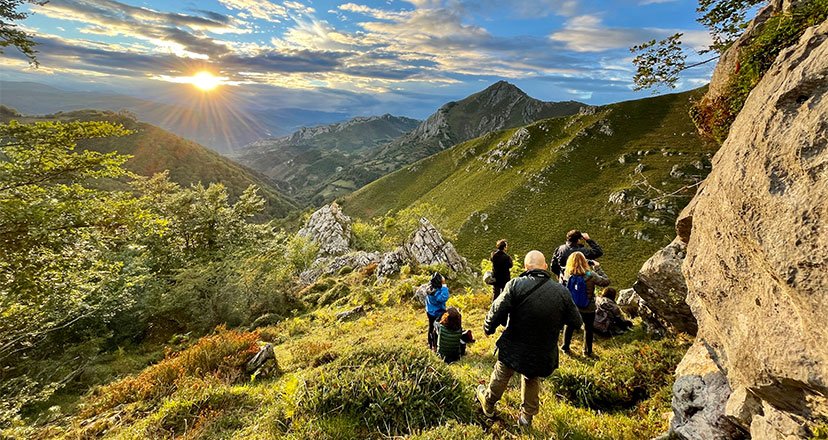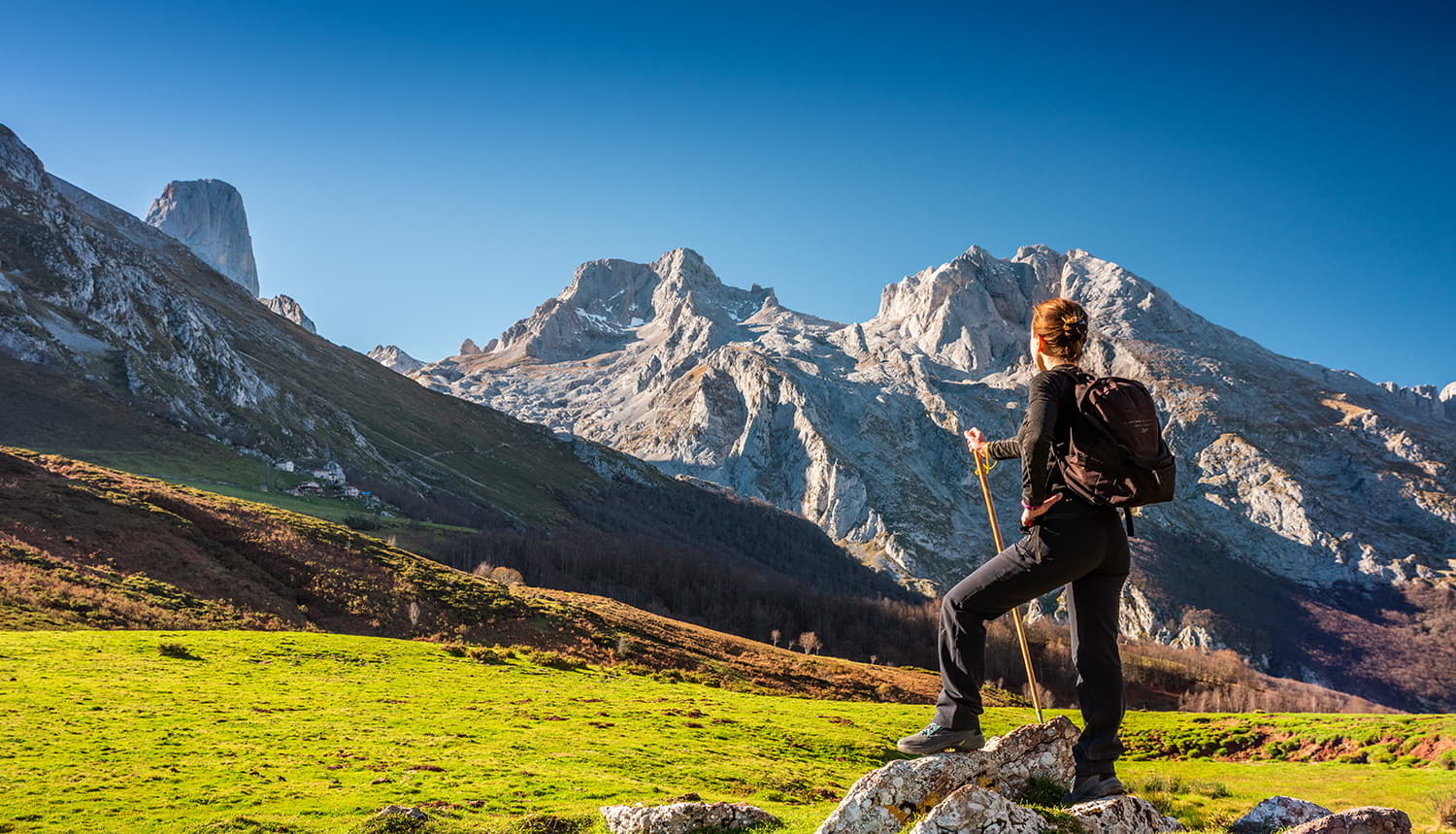Back The best places to see bears in Asturias
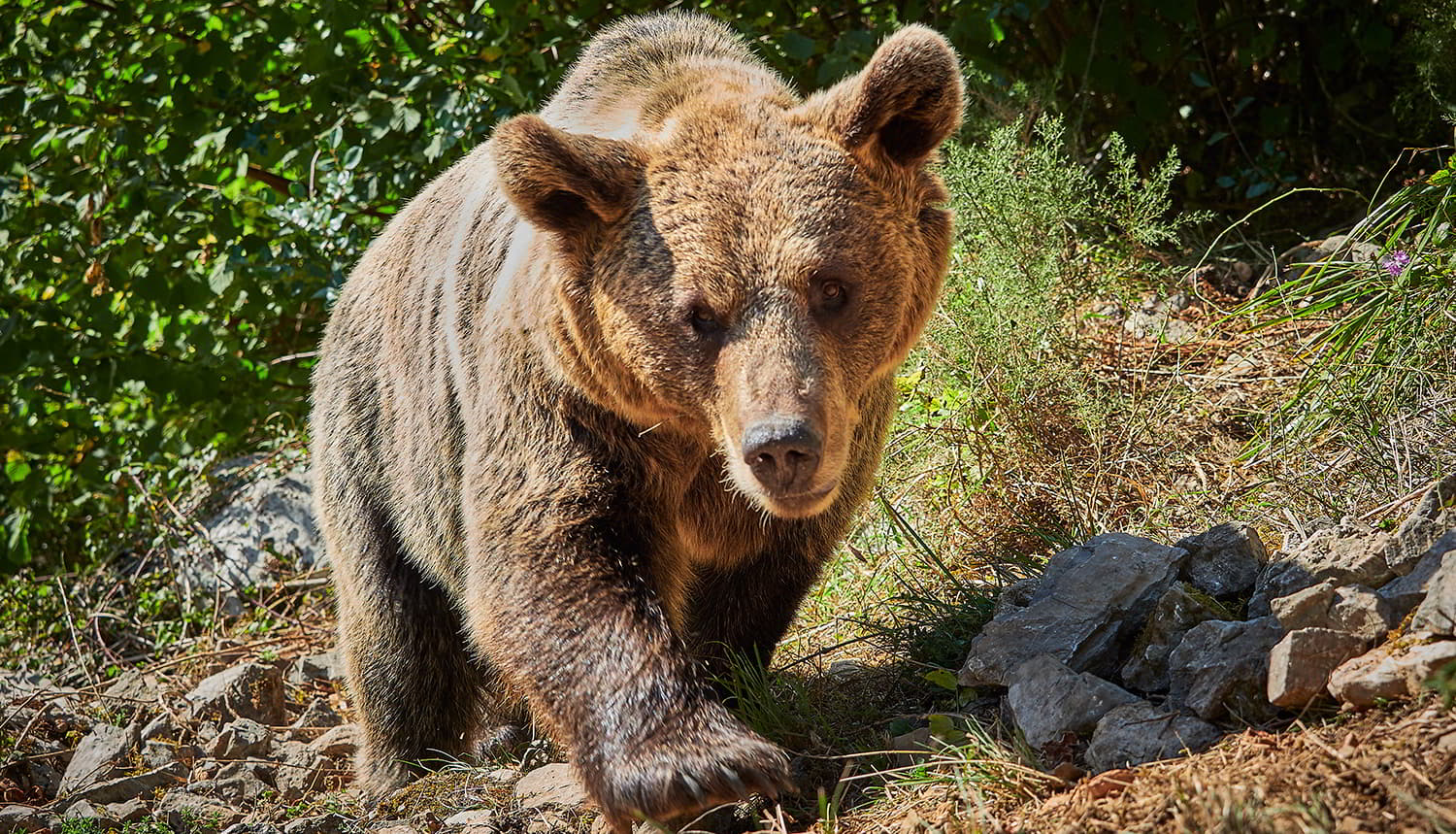
The most interesting places to see bears in Asturias
Bear watching is one of the most enriching and beautiful ecotourism experiences you can enjoy in Asturias. A unique and close encounter with the nature of the Asturian mountains and forests, where our most charismatic animal lives: the Cantabrian brown bear.
The Bear in Asturias
The brown bear is the largest land animal on the Iberian Peninsula. Omnivorous, not very good hunters and with a vegetarian tendency, males reach a wingspan of two metres and can weigh up to 200 kilograms, with large variations in weight throughout the year. Females, on the other hand, are usually slightly more than half the weight of males. They have a sensational sense of smell and their elegant shades range from yellowish-brown to dark brown.
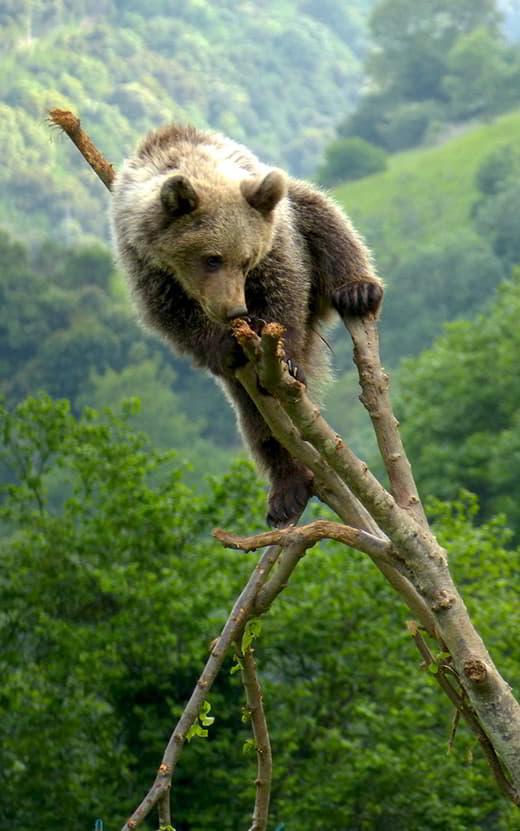
In the past, the bear was present in various mountainous areas of the Iberian Peninsula, from north to south. Since then, its population has dwindled and disappeared from almost everywhere, to the point that today it is only present in the Cantabrian Mountains and the Pyrenees.
The number of the Cantabrian brown bear hit rock bottom between the 1970s and 1980s when, at its darkest moment, there were only 80 specimens left. This number has been gradually recovering thanks to intense conservation efforts, until there are now more than 350 bears in the Cantabrian Mountains. Asturias is the Autonomous Community with the largest number of bears.
This bear population is divided into two subpopulations: eastern and western. The western one, much more numerous, extends from the Ancares in Lugo to the central area of the Cantabrian Mountains. The eastern subpopulation is distributed from the Palencia Mountains to the east of Asturias.
The two are separated by the inter-population corridor, a strip of about 50 km wide. For years there has been contact between the two nuclei, which is excellent news for the conservation of the species, as it increases genetic diversity and reduces strong inbreeding.
The largest bear populations in Asturias are distributed, among other places, in the natural parks of Fuentes del Narcea, Degaña and Ibias; Somiedo/Somiedu and Ubiñas-La Mesa. There are also important populations in other councils, such as Proaza.
When and where to see bears in the wild in Asturias
In April and May, the adult bears are just coming out of hibernation and the young and adorable cubs (cubs) begin to explore the terrain accompanying their mother. This is a time to recharge their batteries after the winter break and it is common to see bears grazing in the meadows, making sightings easier. Spring also brings the rutting season and a lot of activity, making it the best time to observe wild bears.
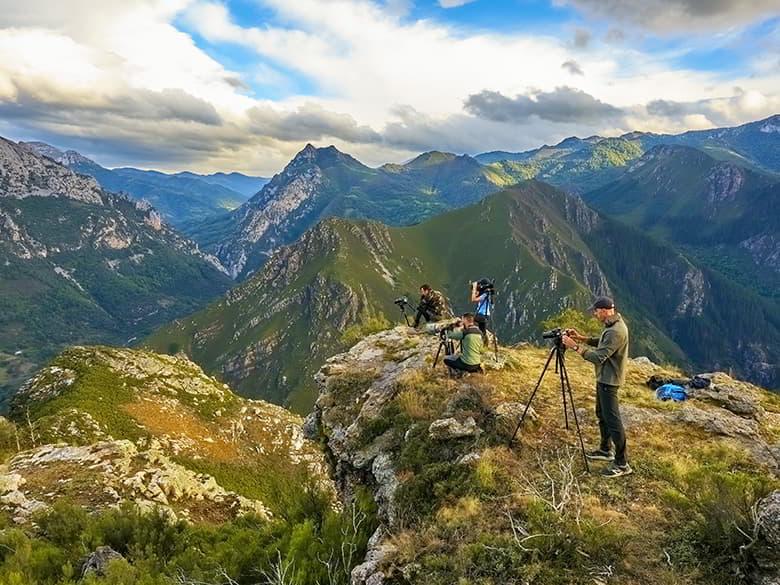
During the summer it continues to forage in sparsely wooded areas, with a predilection for fruit trees. This is also a good time for sightings.
In autumn, these plantigrades gather food, seeking to accumulate reserves to get them through the winter. This is another period of great activity, when they tend to frequent wooded and less visible areas.
Although some specimens do not hibernate, the winter months are the worst for seeing bears in the wild.
Among the many places to choose from to see bears, we emphasise the mountains of two natural parks that are benchmarks in wildlife watching: Somiedo and its neighbour Fuentes del Narcea, Degaña and Ibias. They were the last bear stronghold at the end of the 1980s and, since then, their populations have recovered significantly.
Fuentes del Narcea, Degaña and Ibias Natural Park
The largest natural area in Asturias occupies its southwestern tip and has major natural attractions. It is home to a varied biodiversity, at altitudes ranging between 600 and 2000 metres, as well as the largest bear population on the peninsula.
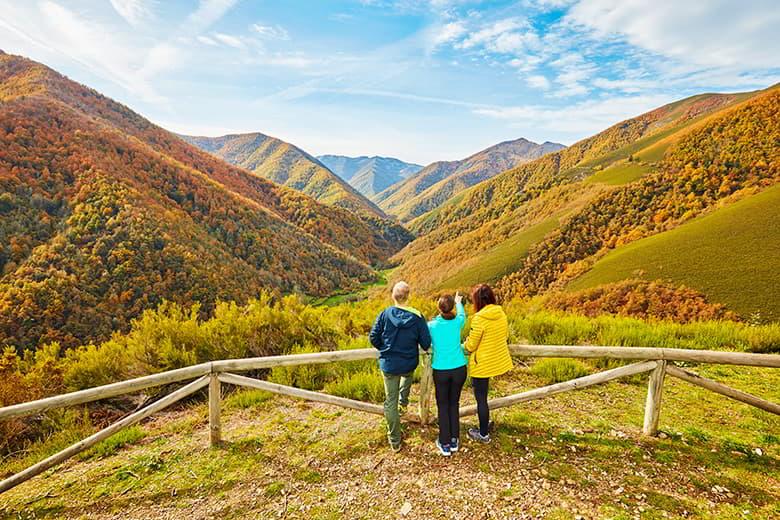
The Muniellos Forest Biosphere Reserve is probably the best known place in the park. This oak forest is the largest in Spain, one of the best preserved in Europe and a magnificent representation of the mountains of western Asturias. Untouched for decades, this natural sanctuary is an unbeatable place to discover the bear's habitat. To preserve Muniellos you must plan your visit in advance, as access is limited to 20 people per day.
There are several points in the natural park where you can observe the brown bear, such as the Bear viewpoint in Fonduveigas, Brañas D'Arriba or Furacón. Several ecotourism companies offer bear watching trips in the councils of Degaña, Cangas del Narcea and Ibias.
Somiedo Natural Park
Somiedo is the oldest of the Asturian natural parks and one of its most important and best preserved areas. This Biosphere Reserve is a unique natural space shaped by five main valleys, which are home to an exceptional biodiversity.
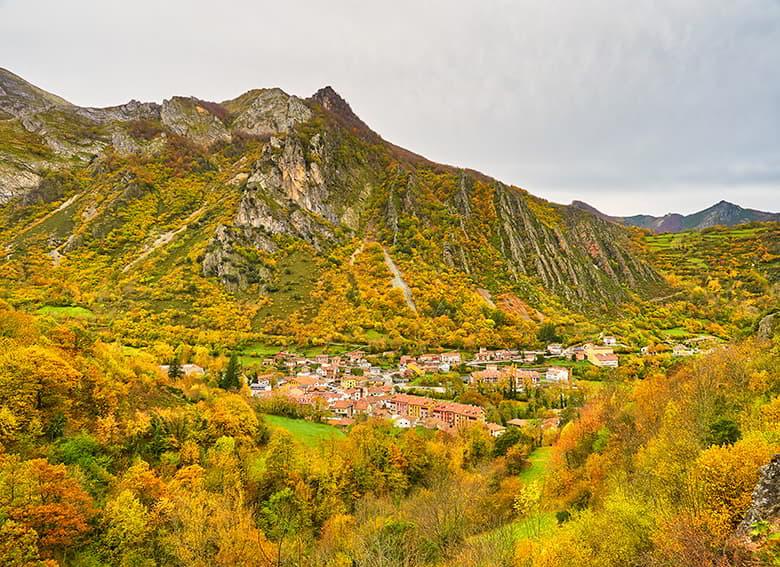
Somiedo has a remarkable landscape and ethnographic value, as well as a solid offer of ecotourism activities, making it an ideal place for Cantabrian brown bear watching.
Surrounded by mountains, oak and beech forests and beautiful "brañas" of "teitos", there are a series of viewpoints that facilitate the sighting of brown bears. Some of the best known and most frequented in Somiedo are the Gúa viewpoint, the impressive Príncipe viewpoint in La Peral and the La Pola viewpoint.
Places to learn about bears in Asturias
In addition to the observation of wild bears in the wild, there are a series of visits and activities suitable for the whole family, which allow you to enjoy and learn about this emblematic animal.
The House of the Bear in Proaza
The Casa del Oso is located in the old rectory of Proaza and is the headquarters of the Asturias Bear Foundation. The building houses a complete exhibition on the Cantabrian brown bear and the existing problems for its conservation. It also houses the tourist information point and visitor reception.
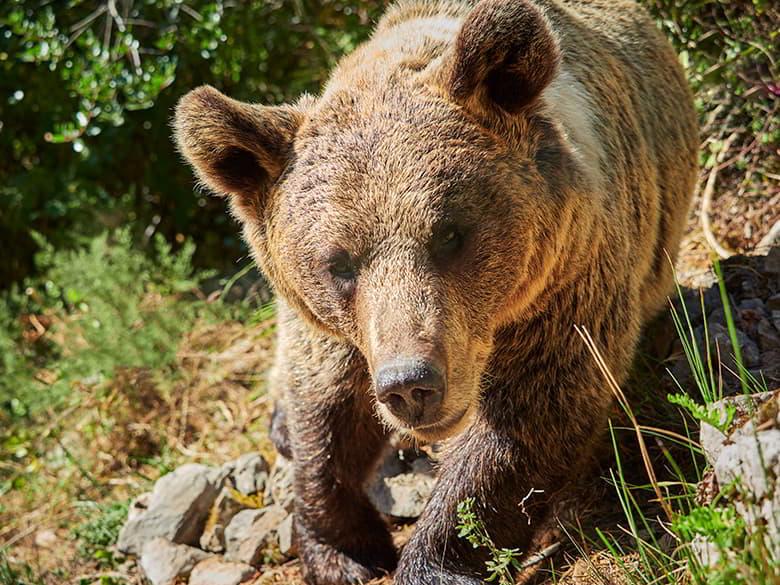
Next tothe Casa del Oso there are two enclosures. The first was built to house Paca and Tola, two female Cantabrian brown bears rescued from poachers, which could not be reintroduced into their natural environment due to their familiarity with human presence. This enclosure, which surrounds more than four hectares of forest, was built in response to this need. Subsequently, in 2008, new facilities were erected opposite the first one, on the other side of the Senda del Oso, in order to allow Paca and Tola to adapt to the presence of an adult male and thus encourage their reproduction. Both enclosures are accessible on foot or by bicycle via the Senda del Oso.
Paca and Tola (now deceased) occupy a little corner in all Asturian hearts, and have become a symbol. Paca occupies one of the enclosures in Proaza, while Molina, the last rescued bear, occupies the other, much larger one, where she lives in semi-freedom.
The Bear Trail
The Senda del Oso follows the route of an old mining railway line, now restored as a greenway. With a "Y" shape and two variants to follow, it is a well-signposted, low-difficulty pedestrian path that can be followed on foot or by bike. Due to its length - 30 km - it is common to rent a bike to do at least a large part of the route, if not all of it.
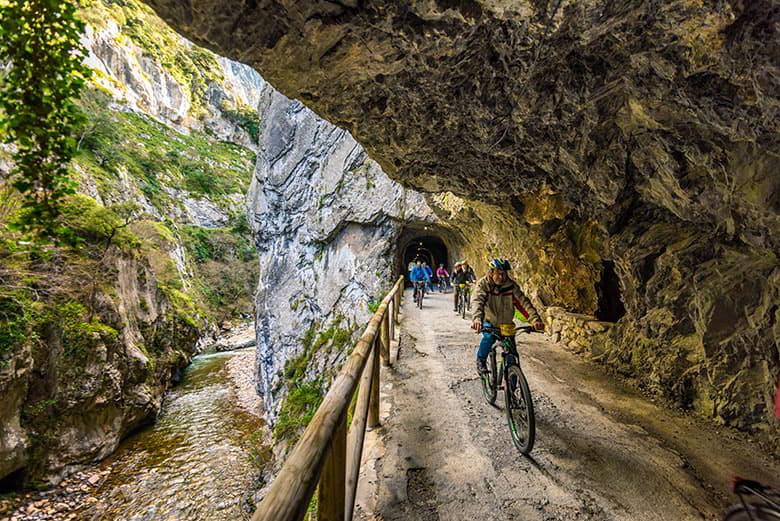
This is one of the most popular activities in Asturias, which runs through the beautiful landscape of the four councils that make up the Bear Valleys: Quirós, Santo Adriano, Teverga and Proaza. On its way through Santo Adriano - 800 m from the Buyera Recreation Area and 2 km from Proaza - the Bear Trail passes in front of the bear enclosures, where it is possible to see Paca and Molina. It should be borne in mind that, even if it is an enclosure, seeing the bears or not is a question of whether they want to show themselves or not.
"Somiedo and the Bear" in La Pola Somiedo
The Brown Bear Foundation has its official headquarters in Asturias and manages the Somiedo and the Bear Interpretation Centre in La Pola Somiedo. The interpretation centre has an exhibition that helps to understand the complex relationship of the inhabitants of the area with their charismatic neighbour, and how it has changed over time. In addition to other content, there are important recommendations, such as what to do in the unlikely event of encountering a bear.
Advice for bear watching in Asturias
The observation activity in Asturias is carried out in the most sustainable and least invasive way possible, from a distance, avoiding disturbing the animal. The result is an authentic and natural sighting, a window into the life of the most charismatic mammal of the Iberian Peninsula. Due to the distance, it is necessary to have at least a good pair of binoculars to get closer to the action and enjoy it.
Regardless of the place and season you choose, seeing a bear in the wild on your own is a truly complicated task, requiring skill and knowledge. To exponentially maximise your sighting options and be able to enjoy it up close with good optics, it is highly recommended to join the field trips of companies specialising in wildlife watching in the area.
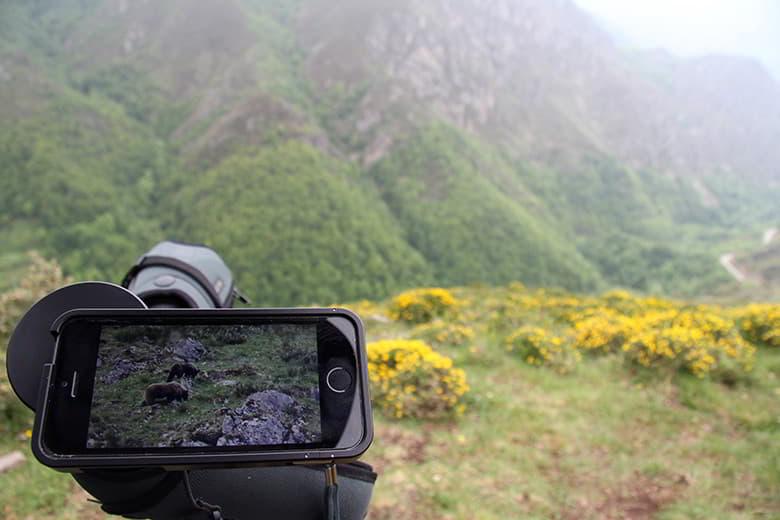
It is an eminently nocturnal animal that tends to escape the heat, so the best times of day for sightings are at dawn and dusk. For this reason, it is important to bring enough warm clothing.
They are wild animals that move freely, so sightings are never guaranteed. However, even if you are not lucky with the bear, it is an opportunity to learn more about this animal (habits, tracks, traces, habitat...) and at the same time it will give you the chance to see and learn about other species of Cantabrian fauna such as deer, eagles, vultures and chamois.
So, in conclusion, Asturias provides the means and the companies to delve into the world of bears. It is possible to get up close to this animal thanks to a good number of professionals who will make your visit an unforgettable experience. And who knows, maybe you will be lucky and leave with the satisfaction of having seen bears in the wild.
How to react if you encounter a bear
The increase in nature tourism, together with the desire to see wildlife, together with the increase in the number of bears, a characteristic animal in the Principality, has led the Asturias Bear Foundation, the Brown Bear Foundation and the Government of the Principality to draw up a list of how to react if you come across a bear.
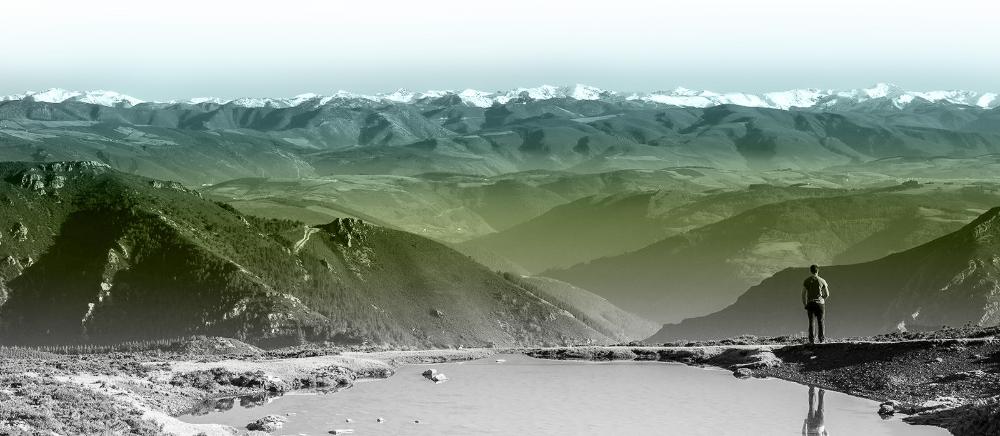
Subscribe to our newsletter and take advantage of offers, discounts, and news
Subscribe

